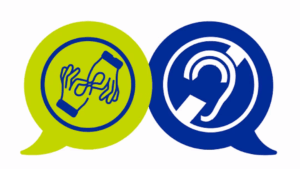Standardized interpreter training is a vital part of the interpreting industry. A well-crafted interpreter training program not only prepares an interpreter for the demands of the job but ensures consistent quality. But why attend a professional interpreter training session? What are the benefits of training with a group, rather than as an individual? What constitutes a standardized interpreter training? Whether your goal is to become a medical interpreter, general community interpreter, or court-certified interpreter, training has varied benefits.
Why attend a professional interpreter training session?
The interpreting industry is moving into a trend of higher education standards for all interpreters. Standardized training is a critical part of preparation as medical interpreting certification becomes the “new normal” among hiring trends. In our blog post about The Path to National Medical Interpreter Certification we touched on the agencies responsible for this evolution. The National Board of Certification for Medical Interpreters (NBCMI) and the Certification Commission for Healthcare Interpreters (CCHI) offer this certification. For legal interpreters, the National Center for State Courts (NCSC) offers resources and Court Interpreting certification programs. All certification exams require pre-requisite study to ensure interpreter quality and experience.
As community interpreting research gains renewed momentum; the overwhelming consensus is that standardized training equals better experience. This includes not only the interpreter and provider but the non-English speaker as well. A proper interpreter training program (including 40 hour interpretation certification programs and court interpreter training) leads to smoother sessions. As new interpreters enter the field armed with proper training; providers and non-English speakers begin to anticipate consistency. Trained interpreters understand procedure; from general industry rules (such as speaking in the first person) to interjecting and clarifying. The goal of all standardized training programs is to ensure that interpreters follow the same rules. This lets any provider and any non-English speaker work with any interpreter: preserving professional distance and “clean interpreting.”

“Clean interpreting”
The idea of “clean interpreting” is present in the collection: “Interpreting in the 21st Century: Challenges and Opportunities.” These texts were compiled and edited by Giuliana Garzone and Maurizio Viezzi. They include Helge Niska’s groundbreaking 2002 work; “Community Interpreter Training: Past, Present, Future.” This paper provides the oft-cited Interpreter Role Pyramid: Conduit, Clarifier, Culture Broker, and Advocate. These roles are arranged in proportion to how often they’re used: the largest devoted to “Conduit” and the smallest, “Advocate.” Standardized interpreter training gives clear understanding and distinction between these roles: vital to work as a modern community interpreter.
Interpreter training programs also help new interpreters feel prepared and confident as they enter the field. A 40 hour medical interpretation certification program consists of not only medical terminology and how to use it, but practice. This practice takes place in a safe space; where mistakes are encouraged and troubleshooting is collaborative. It’s a welcoming atmosphere and helps build an interpreting network among interpreting professionals. A proper interpreter training program offers opportunity for discussion and questions at every stage.
Finally, standardized interpreter training prepares you for national interpreter certification. A common misconception is that there must be a “time requirement” for certification pre-requisites. By NBCMI and CCHI standards, this is not necessary. While a 40 hour medical interpretation training course will give you more study time; the content is more important. As long as the course content meets NBCMI and CCHI interpreter training standards; there is no hour or “credit” requirement.
Now that we have a little more background; let’s ask the real questions. What constitutes a standardized training course? How do you decide which course is right for you?
What constitutes a standardized interpreter training?
As we discussed above, the two organizations most highly regarded for national interpreter certification are the NBCMI and CCHI. Their interpreter training standards are highly similar: they’re created for interpreters wishing to pass national certification exams. Standardized training requirements break into the following five categories:
The Role of the Interpreter:
We touched on this in the last section. The Role of the Interpreter is clear: an interpreter is first and foremost a language conduit. The Role Pyramid also allows for cultural clarification and interjecting to admit a mistake. The Advocate role is the most controversial in community interpreting: one must approach it carefully. A training program is the best way to understand the procedures necessary to be a professional interpreter.
Interpreting Terminology:
Different interpreter programs give different levels of terminology information. Self-study is always necessary as an interpreter; but a training course gives a focused overview of the most important terms. Longer courses naturally focus more on terminology; while shorter courses offer a higher proportion of practice activities and outside resources.
Interpreting Practice:
Arguably, the most vital component of any interpreter training is practice. Interpreting practice must take place in a safe environment with instructor oversight and advice. Interpreter training programs; whether Medical Interpreter Training Programs or Legal Interpreter Training Programs; offer this unique opportunity. Practice during interpreter training gives new (and seasoned); interpreters the chance to make mistakes and receive immediate feedback. This eliminates danger in the field: interpreters learn proper procedure in training rather than making an error in-session.
Discussion:
Interpreter Training Programs should include open discussion and opportunities to ask questions at every turn. This allows not only networking but the chance to work through theoretical scenarios and form a plan of action.
Feedback:
Finally, a Standardized Interpreter Training Program should include expert feedback from the instructor. The instructor plays many roles in a training program: teacher, collaborator, moderator, and community-builder among others. The instructor should be an expert in the field; preferably with interpreting experience as well as backend industry knowledge. Feedback should happen consistently through the program: advice, answers, encouragement, and activity monitoring.
Global Arena’s 16-Hour Interpreter Training
With such a variety of medical and legal interpreting certification programs available; it’s difficult to know where to turn. Pursuing medical interpreting certification is immediate career advancement and standardized training is a vital pre-requisite. Global Arena can help you to comply with this requirement; with its 16-hour Interpreter Training Program. Our training program meets all NBCMI and CCHI interpreter training standards. The course is especially targeted to interpreters who are starting out and want to hone their skills. It’s also perfect for experienced interpreters who’d like to brush up on their industry knowledge; and work through skill-building activities. The 16-hour Interpreter Training provides a certificate of interpreting training completion. You’ll be able to use this certificate to help you through the national certification process. It’s also immediately useful for working with hiring managers to find an interpreting position.
Global Arena’s course integrates interpreting activities and practice:
Each class consists of four days of live (over zoom) instruction, reviews, an exam, and a certificate upon completion and passing. The course integrates interpreting activities and practice into each module. It’s structured to be interpreting experience-centric: being an interpreter requires training, patience, understanding, and skill. Course focuses include the differences between: bilingual speakers and trained interpreters; the role of the interpreter, and proper conduct. We also cover best practices: interpreting ethics, industry basics, and “dos and don’ts” for working as an interpreter. We’ll discuss common medical, legal, and school terminology; and how to troubleshoot difficult situations. As we’re currently experiencing a global pandemic; we talk about how to properly use PPE during in-person interpreting. The course also allows practice and discussion about telephonic interpreting (OPI) and video-remote interpreting (VRI).
Our training has the added benefit of building your interpreting network: as you’re working together, the classes form a community. You’ll meet other interpreters of widely varying skill levels; learn from their expertise, and work closely to build your own. Our activities and discussions are excellent times to “troubleshoot” interpreting scenarios and share experiences. You’ll also have the opportunity to discuss the interpreting industry: particularly in improving conditions through standardized practice. Interpreting is more than a job: it’s skill, service, and vitality for non-English speaking communities in America. Global Arena’s 16-hour Interpreter Training is committed to building the foundation for a successful interpreting career.
For more information and sign-up, visit our Global Arena Interpreter Training page.




